But a very little while, and Lebanon shall be changed into an orchard, and the orchard be regarded as a forest! On that day the deaf shall hear the words of a book; and out of gloom and darkness, the eyes of the blind shall see. The lowly will ever find joy in the LORD, and the poor rejoice in the Holy One of Israel. For the tyrant will be no more and the arrogant will have gone; all who are alert to do evil will be cut off, those whose mere word condemns a man, who ensnare his defender at the gate, and leave the just man with an empty claim. —Today’s first Mass reading
On the day of the great slaughter, when the towers fall, the light of the moon will be like that of the sun and the light of the sun will be seven times greater like the light of seven days. On the day the LORD binds up the wounds of his people, he will heal the bruises left by his blows. —Saturday’s first Mass reading
The sun will become seven times brighter than it is now. —Early Church Father, Caecilius Firmianus Lactantius, The Divine Institutes
The Books of Isaiah and Revelation may seem at first glance to be unrelated. On the contrary, they simply emphasize different aspects of the end of the age. Isaiah’s prophecies are a compressed view of the coming of the Messiah, who will triumph over evil and usher in an Era of Peace. The error, so to speak, of some of the early Christians was threefold: that the coming of the Messiah would immediately put an end to tyranny; that the Messiah would establish a physical Kingdom on earth; and that all this would unfold in their lifetimes. But St. Peter finally threw these expectations into perspective when he wrote:
Do not ignore this one fact, beloved, that with the Lord one day is like a thousand years and a thousand years like one day. (2 Peter 3:8)
Since Jesus Himself was explicit that “My kingdom does not belong to this world,”[1]John 18:36 the early Church quickly condemned the notion of a political reign of Jesus in the flesh on earth as millenarianism. And here’s where the Book of Revelation dovetails with Isaiah: the early Christians clearly understood that the “millennium” spoken of in Revelation Chapter 20 was the fulfillment of Isaiah’s Era of Peace, and that after the death of Antichrist and end of the global grip of the “beast”, the Church would reign for a “thousand years” with Christ.
I also saw the souls of those who had been beheaded for their witness to Jesus and for the word of God, and who had not worshiped the beast or its image nor had accepted its mark on their foreheads or hands. They came to life and they reigned with Christ for a thousand years. (Revelation 20:4)
The most authoritative view, and the one that appears to be most in harmony with Holy Scripture, is that, after the fall of the Antichrist, the Catholic Church will once again enter upon a period of prosperity and triumph. —The End of the Present World and the Mysteries of the Future Life, Fr. Charles Arminjon (1824-1885), p. 56-57; Sophia Institute Press
The Early Church Fathers wrote of these times of “blessing” on the authority of St. John and Scripture itself. Using the highly allegorical language of Isaiah to refer to spiritual realities,[2]Contrary to what some biblical scholars claim, St. Augustine was not opposed to understanding Revelation 20:6 as a spiritual renewal of sorts: “…as if it were a fit thing that the saints should thus enjoy a kind of Sabbath-rest during that period, a holy leisure after the labors of six thousand years since man was created… (and) there should follow on the completion of six thousand years, as of six days, a kind of seventh-day Sabbath in the succeeding thousand years… And this opinion would not be objectionable, if it were believed that the joys of the saints, in that Sabbath, shall be spiritual, and consequent on the presence of God…” —St. Augustine of Hippo (354-430 A.D.; Church Doctor), De Civitate Dei, Bk. XX, Ch. 7, Catholic University of America Press they spoke of what is essentially the fulfillment of the Our Father: when Christ’s Kingdom will come and His will be done “on earth as it is in Heaven.”
So, the blessing foretold undoubtedly refers to the time of His Kingdom, when the just will rule on rising from the dead; when creation, reborn and freed from bondage, will yield an abundance of foods of all kinds from the heaven’s dew and the fertility of the earth, just as the seniors recall. Those who saw John, the Lord’s disciple, [tell us] that they heard from him how the Lord taught and spoke about these times… —St. Irenaeus of Lyons, Church Father (140–202 A.D.); Adversus Haereses, Irenaeus of Lyons, V.33.3.4, The Fathers of the Church, CIMA Publishing
Those who give Isaiah a purely historical interpretation are ignoring this teaching in Tradition and robbing the faithful of the hope and vindication of God’s Word that is coming. Did Jesus and St. Paul speak of labor pains before the Day of the Lord only for there to be a stillbirth? Are the Old and New Testaments’ promises that the poor and meek shall inherit the earth to come to naught? Is the Holy Trinity to throw up their arms and say, “Alas, we tried to extend the Gospel to the ends of the earth, but dang if our eternal foe, Satan, was just too clever and strong for Us!”
No, the labor pains we are presently enduring are leading to a “birthing” that will bring about the “restoration of the Kingdom of Christ,” so taught Pope Piux X and his successors.[3]cf. The Popes and the Dawning Era It is the restoration of the Kingdom of the Divine Will within the heart of man that was lost in Adam — perhaps the “resurrection” that St. John speaks of before the Final Judgment.[4]cf. The Resurrection of the Church It will be the reign of Jesus “King of all Nations” within His Church in an all-new manner, what Pope St. John Paul II calls a coming “new and divine holiness.”[5]cf. The Coming New and Divine Holiness This is the true meaning of the symbolic “millennium” anticipated within Christianity: a triumph and Sabbath Rest for the People of God:
God himself had provided to bring about that “new and divine” holiness with which the Holy Spirit wishes to enrich Christians at the dawn of the third millennium, in order to “make Christ the heart of the world.” —POPE JOHN PAUL II, Address to the Rogationist Fathers, n. 6, www.vatican.va
Now… we understand that a period of one thousand years is indicated in symbolic language. —St. Justin Martyr, Dialogue with Trypho, Ch. 81, The Fathers of the Church, Christian Heritage
When will this come? According to both Isaiah and the Book of Revelation: after the end of tyranny. This judgment of the Antichrist and his followers, a judgment “of the living”, is described as follows:
And then that wicked one shall be revealed whom the Lord Jesus shall kill with the spirit of his mouth; and shall destroy with the brightness of his coming… Anyone who worships the beast or its image, or accepts its mark on forehead or hand, will also drink the wine of God’s fury… (2 Thessalonians 2:8; Rev 14:9-10)
In keeping with the Early Church Fathers, nineteenth-century writer Fr. Charles Arminjon explains this passage as a spiritual intervention of Christ,[6]cf. The Middle Coming not the Second Coming at the end of the world.
St. Thomas and St. John Chrysostom explain the words quem Dominus Jesus destruet illustratione adventus sui (“whom the Lord Jesus will destroy with the brightness of His coming”) in the sense that Christ will strike the Antichrist by dazzling him with a brightness that will be like an omen and sign of His Second Coming… —The End of the Present World and the Mysteries of the Future Life, Fr. Charles Arminjon (1824-1885), p. 56-57; Sophia Institute Press
Yes, with a puff of his lips, Jesus will put an end to the arrogance of the world’s billionaires, banksters, “philanthropists” and bosses who are unreservedly refashioning creation in their own image:
Fear God and give him glory, for his time has come to sit in judgment [upon]… Babylon the great [and]… anyone who worships the beast or its image, or accepts its mark on forehead or hand… Then I saw the heavens opened, and there was a white horse; its rider was called “Faithful and True.” He judges and wages war in righteousness… The beast was caught and with it the false prophet… The rest were killed by the sword that came out of the mouth of the one riding the horse… (Rev 14:7-10, 19:11, 20-21)
This was also prophesied by Isaiah who likewise foretold, in strikingly parallel language, a coming judgment followed by a period of peace.
He shall strike the ruthless with the rod of his mouth, and with the breath of his lips he shall slay the wicked. Justice shall be the band around his waist, and faithfulness a belt upon his hips. Then the wolf shall be a guest of the lamb… the earth shall be filled with knowledge of the LORD, as water covers the sea…. On that day, The Lord shall again take it in hand to reclaim the remnant of his people that is left… When your judgment dawns upon the earth, the world’s inhabitants learn justice. (Isaiah 11:4-11; 26:9)
This Era of Peace is what the Church Fathers called the Sabbath Rest. Following St. Peter’s allegory that “a day is like a thousand years”, they taught that the Day of the Lord is the “seventh day” after roughly 6000 years since Adam.
And God rested on the seventh day from all his works… Therefore, a sabbath rest still remains for the people of God. (Heb 4:4, 9)
…when His Son will come and destroy the time of the lawless one and judge the godless, and change the sun and the moon and the stars—then He shall indeed rest on the seventh day… after giving rest to all things, I will make the beginning of the eighth day, that is, the beginning of another world. —Letter of Barnabas (70-79 A.D.), written by a second century Apostolic Father
The eighth day being eternity.
Hence, brothers and sisters, we are watching not only global tyranny spreading with Warp Speed, Shock and Awe, but arguably witnessing the entire infrastructure for the “mark of the beast” being put into place: a health passport system tied to the “mark” of a vaccine, without which one will not be able to “buy or sell” (Rev 13:17). Remarkably, the Orthodox Saint Paisios, who died in 1994, wrote of this before his death:
…now a vaccine has been developed to combat a new disease, which will be obligatory and those taking it will be marked… Later on, anyone who is not marked with the number 666 will not be able to either buy or sell, to get a loan, to get a job, and so forth. My thinking tells me that this is the system through which the Antichrist has chosen to take over the whole world, and people who are not part of this system won’t be able to find work and so on — whether black or white or red; in other words, everyone he will take over through an economic system that controls the global economy, and only those who have accepted the seal, the mark of the number 666, will be able to participate in business dealings. —Elder Paisios — The Signs of the Times, p.204, Holy Monastery of Mount Athos / Distributed by AtHOS; 1st edition, January 1, 2012; cf. countdowntothekingdom.com
If so, then it also means the end of the reign of tyranny is approaching… and the Triumph of the Immaculate Heart and of Jesus, Our Savior, is close at hand.
She was with child and wailed aloud in pain as she labored to give birth… She gave birth to a son, a male child, destined to rule all the nations with an iron rod. (Rev 12:2, 5)
…the perfect communion with the Lord enjoyed by those who persevere to the end: the symbolism of the power given to the victors… sharing in the resurrection and glory of Christ. —The Navarre Bible, Revelation; footnote, p. 50
To the victor, who keeps to my ways until the end, I will give authority over the nations. He will rule them with an iron rod… And to him I will give the morning star. (Rev 2:26-28)
The LORD sustains the lowly; the wicked he casts to the ground. —Saturday’s Psalm
—Mark Mallett is the author of The Final Confrontation and The Now Word, and a cofounder of Countdown to the Kingdom
Related Reading
Isaiah’s Prophecy of Global Communism
Millenarianism – What it is, and is Not
The Resurrection of the Church
Preparing for the Era of Peace
Footnotes
| ↑1 | John 18:36 |
|---|---|
| ↑2 | Contrary to what some biblical scholars claim, St. Augustine was not opposed to understanding Revelation 20:6 as a spiritual renewal of sorts: “…as if it were a fit thing that the saints should thus enjoy a kind of Sabbath-rest during that period, a holy leisure after the labors of six thousand years since man was created… (and) there should follow on the completion of six thousand years, as of six days, a kind of seventh-day Sabbath in the succeeding thousand years… And this opinion would not be objectionable, if it were believed that the joys of the saints, in that Sabbath, shall be spiritual, and consequent on the presence of God…” —St. Augustine of Hippo (354-430 A.D.; Church Doctor), De Civitate Dei, Bk. XX, Ch. 7, Catholic University of America Press |
| ↑3 | cf. The Popes and the Dawning Era |
| ↑4 | cf. The Resurrection of the Church |
| ↑5 | cf. The Coming New and Divine Holiness |
| ↑6 | cf. The Middle Coming |



 Alicja Lenczewska
Alicja Lenczewska

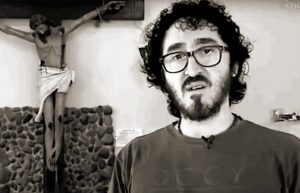

 Elizabeth Kindelmann
Elizabeth Kindelmann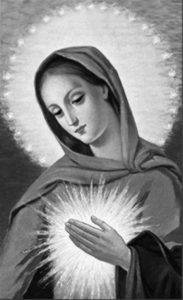 Through what became The Spiritual Diary, Jesus and Mary taught Elizabeth, and they continue to instruct the faithful in the divine art of suffering for the salvation of souls. Tasks are assigned for each day of the week, which involve prayer, fasting, and night vigils, with beautiful promises attached to them, laced with special graces for priests and the souls in purgatory. In their messages, Jesus and Mary say that The Flame of Love of the Immaculate Heart of Mary is the greatest grace given to mankind since the Incarnation. And in the not-so-distant future, her flame will engulf the entire world.
Through what became The Spiritual Diary, Jesus and Mary taught Elizabeth, and they continue to instruct the faithful in the divine art of suffering for the salvation of souls. Tasks are assigned for each day of the week, which involve prayer, fasting, and night vigils, with beautiful promises attached to them, laced with special graces for priests and the souls in purgatory. In their messages, Jesus and Mary say that The Flame of Love of the Immaculate Heart of Mary is the greatest grace given to mankind since the Incarnation. And in the not-so-distant future, her flame will engulf the entire world.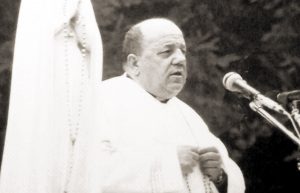 Father Stefano Gobbi
Father Stefano Gobbi Why Gisella Cardia?
Why Gisella Cardia?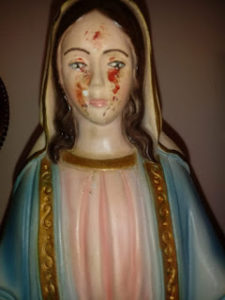 Thirdly, the messages have frequently been accompanied by visible phenomena, photographic evidence found in In Cammino con Maria, which cannot be the fruit of subjective imagination, notably the presence of the stigmata on Giselle’s body and and the appearance of crosses or religious texts in blood on Gisella’s arms. See the pictures taken from her apparition website
Thirdly, the messages have frequently been accompanied by visible phenomena, photographic evidence found in In Cammino con Maria, which cannot be the fruit of subjective imagination, notably the presence of the stigmata on Giselle’s body and and the appearance of crosses or religious texts in blood on Gisella’s arms. See the pictures taken from her apparition website 
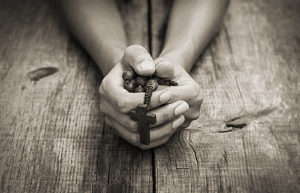 Jennifer
Jennifer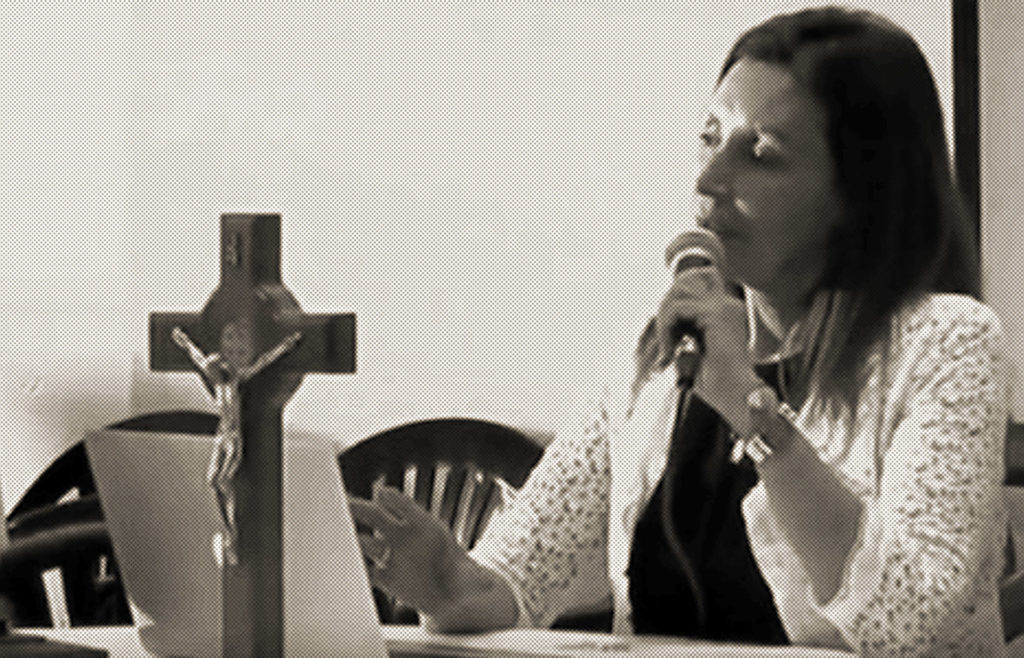
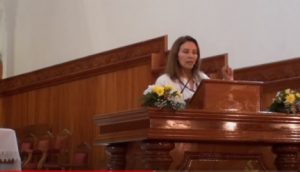
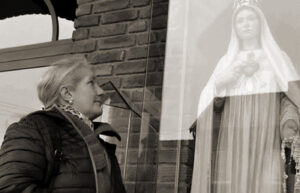 Why Manuela Strack?
Why Manuela Strack?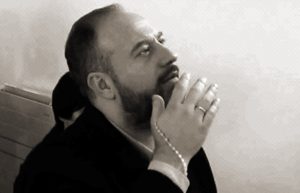

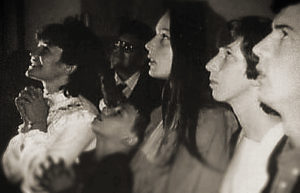 Why the Visionaries of Our Lady of Medjugorje?
Why the Visionaries of Our Lady of Medjugorje? Why Pedro Regis?
Why Pedro Regis? Why the Servant of God Luisa Piccarreta?
Why the Servant of God Luisa Piccarreta?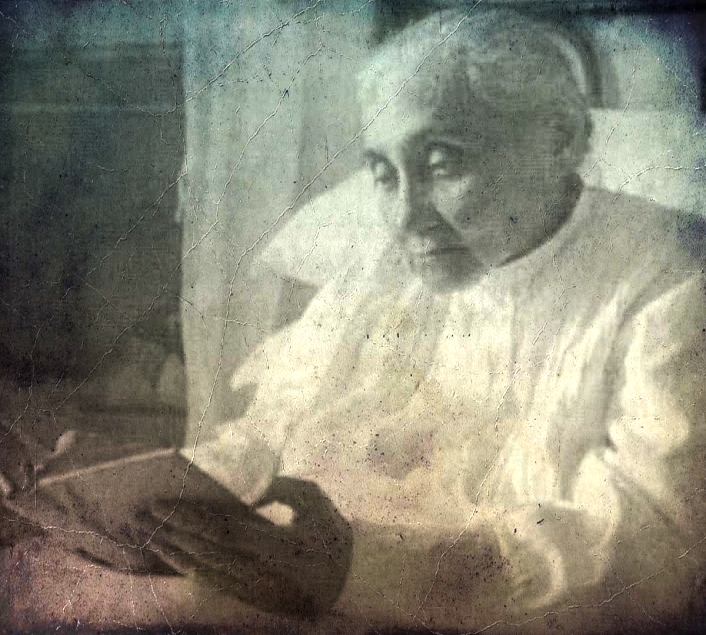 of the saints. It wasn’t until she became a “Daughter of Mary” that the nightmares finally ceased at the age of eleven. In the following year, Jesus began to speak interiorly to her especially after receiving Holy Communion. When she was thirteen, He appeared to her in a vision that she witnessed from the balcony of her home. There, in the street below, she saw a crowd and armed soldiers leading three prisoners; she recognized Jesus as one of them. When He arrived beneath her balcony, He raised his head and cried out: “Soul, help Me!” Deeply moved, Luisa offered herself from that day on as a victim soul in expiation for the sins of mankind.
of the saints. It wasn’t until she became a “Daughter of Mary” that the nightmares finally ceased at the age of eleven. In the following year, Jesus began to speak interiorly to her especially after receiving Holy Communion. When she was thirteen, He appeared to her in a vision that she witnessed from the balcony of her home. There, in the street below, she saw a crowd and armed soldiers leading three prisoners; she recognized Jesus as one of them. When He arrived beneath her balcony, He raised his head and cried out: “Soul, help Me!” Deeply moved, Luisa offered herself from that day on as a victim soul in expiation for the sins of mankind.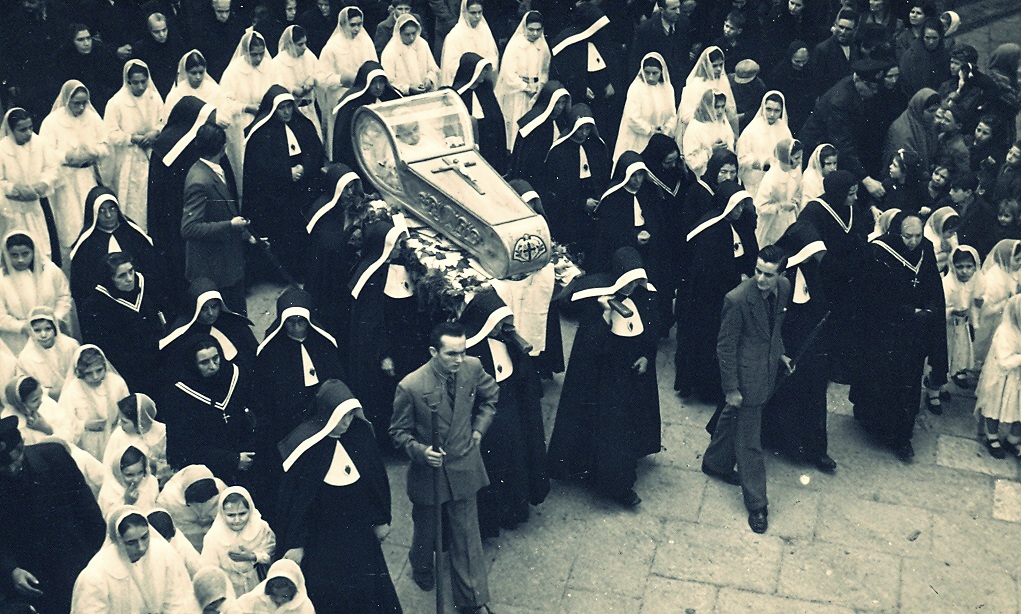 immobile, rigid-like state that appeared almost as if she were dead. It was only when a priest made the sign of the Cross over her body that Luisa regained her faculties. This remarkable mystical state persisted until her death in 1947—followed by a funeral that was no little affair. During that period in her life, she suffered no physical illness (until she succumbed to pneumonia at the end) and she never experienced bedsores, despite being confined to her little bed for sixty-four years.
immobile, rigid-like state that appeared almost as if she were dead. It was only when a priest made the sign of the Cross over her body that Luisa regained her faculties. This remarkable mystical state persisted until her death in 1947—followed by a funeral that was no little affair. During that period in her life, she suffered no physical illness (until she succumbed to pneumonia at the end) and she never experienced bedsores, despite being confined to her little bed for sixty-four years. Why Simona and Angela?
Why Simona and Angela?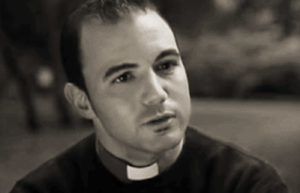
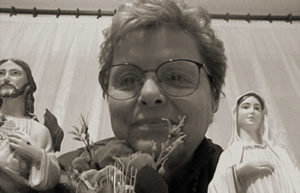 Valeria Copponi
Valeria Copponi